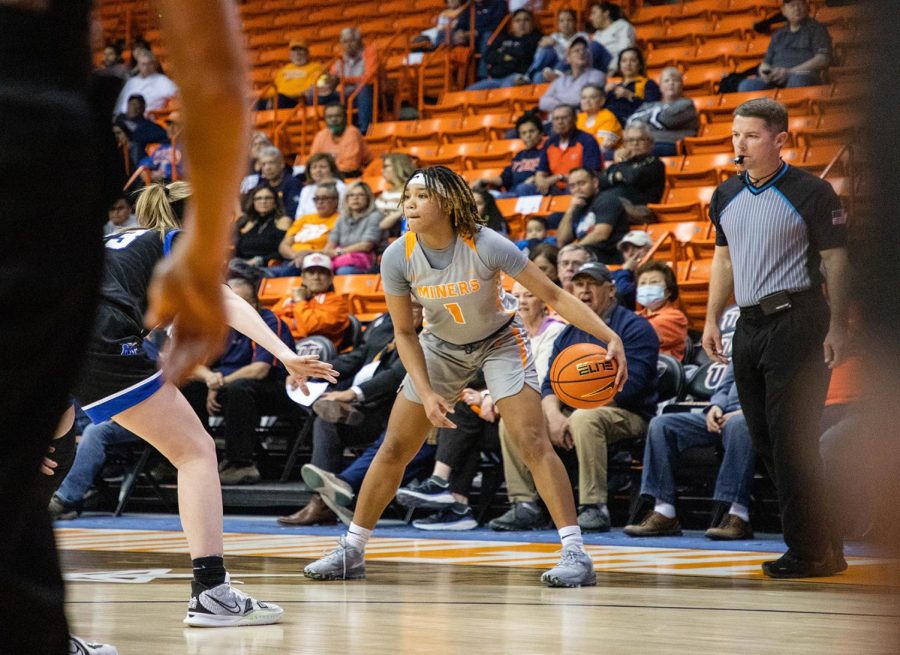The Prospector has covered many stories since its first publication in 1915. A run like that is not lacking in controversial moments. Through the good and the bad, the student newspaper has been the source for student news and the assayer of student opinion.
Although the ideologies of the editorial staff have changed throughout the years, one thing remains the same: news. No matter the opinion, news never goes without controversy.
We compiled a list of the top controversial moments through the years, from a sports figure’s death to drug busts. Here are the top controversial moments throughout the decades.
-
1920s- The Prospector publishes special Women Haters Issue,
April 16, 1927
During the ‘20s, The Prospector welcomed contributions from the student body. They allowed students to vent their hate for freshmen and sophomores in special issues in 1927. In a March issue, they called out to the student body with a special ad that read: “The next issue of ‘The Prospector’ will be unique in the annals of college journalism. It will be the Woman Haters’ Issue!! We have had the freshmen and sophomore issues. There remains in school only one other class big enough to furnish material for an A-1 Prospector—the women haters. Come on, show ‘em that you really mean it! Make the Romeos bow their heads down in shame! Anything goes!”
The following month, The Prospector published the Women Haters’ Issue. In the first column on the front page, a student wrote: “There is no place on the face of the earth that can boast the distinction of being free from habitation of these creatures known as women…Strictly speaking, women are necessary to the revolving of the earth. If there were no women, there would be no court cases, no murders, no breaking of friendships, no necessity of men putting their noses to the grindstones.”
The issue also featured a poem titled “Belle,” which ended with a stanza that read: “Theirs had been a joyful whirl;/Everything went well—/‘Til they loved a pretty girl/Who sent them both to Hell!”
-
1930s- World War II affects home,
Oct. 14, 1939
Despite the U.S. not being directly engaged in World War II, during 1939, there was an event that disrupted the lives of many families and the plans of U.S. educators, educational organizations and students. According to a Prospector issue published on Sept. 30, 1939, the great European conflict affected higher education at UTEP and many other universities across the country.
More than 300 foreign exchange students’ trips had to be cancelled, and additionally about 7,500 students were forced to remain at their current universities. Students who found themselves in England were asked to return to the U.S. as soon as passage was arranged.
Rhodes scholarships were suspended and ROTC students worried about their status, should the U.S. be drawn into the war. However, Army officials made it clear the ROTC couldn’t be “called into service by the federal government, as it has no jurisdiction over the university units.”
During this time and because of the war, the aviation course offered at the college, under the supervision of the Civil Aeronautics Authority, became less popular at UTEP.
Records from The Prospector indicated that on Oct. 14, 1939, 35 students turned in their application forms, while 16 of these students registered for the aviation course. Students complained that $40 was quite a large amount to put out on top of the other bills, which included school registration fees.
-
1940s- Maybe a crazy idea, but still comfortable,
Feb. 8, 1941
In what may have been the earliest effort to fund a place to lounge while at school, students at the Texas College of Mines were looking to fundraise to build their own areas, such as a student union.
It started when sororities wanted a place to relax other than being at the library. Close to 100 students financed three lodges at the time for a total of $15,000. These 100 students funded a way to develop their own place to stay, while 1,100 other students at the Texas College of Mines were looking for a place to lounge during their stay at school.
Amid the discussions, talks about building a student union began to arise with individual students and organizations such as The Prospector.
To the staff at the time, it was a wild idea that would ultimately cost an estimated $6,000 to build, with a large coke bar, a hot-plate and grill, alcoves on the side and tables in the center.
The editorial staff concluded that the student union should be paid for by voluntarily subscribed student union fees, which averaged $1 per year, and that it would take several years to pay off the building.
-
1950s- The Prospector survey polls for opinions on segregation,
March 30, 1955
A survey conducted by The Prospector raised a question that may be seen as ridiculous and controversial by today’s standards. In the 1950s, student opinion on whether or not the university should allow African-American students to attend Texas Western College (UTEP) was asked and published. The question in the paper at the time read as such:
“Should Negros be admitted to Texas Western College?” The answers that were featured in the paper varied. One student, whose name was not published, said, “Certainly, if we can allow foreign students in school, we should not prohibit fellow Americans from enjoying the same privileges.”
Another anonymous student was in opposition and said, “No. At the present time the white students are not ready to accept a Negro in the classroom and it would be a source of embarrassment not only for the white student, but to the Negro.”
On March 30, 1955, an anti-segregation lawsuit was filed against Texas Western College on behalf of Thelma White, who was seeking admission at the college. There was uproar both in opposition and agreement of the idea of White’s admittance, leading The Prospector to ask for student opinions.
-
1960s- SA president asks for course in black history,
Feb. 11, 1969
The ‘60s was a time when the Civil Rights Movement was underway and students were exercising their right to free speech more frequently.
On Feb. 11, 1969, The Prospector ran a story about then Student Association President Ron McCluskey making an appeal to the Faculty Council about adding black history and Mexican-American courses to the curriculum at the university.
A professor in the history department, Kenneth Bailey, agreed that these courses should be taught in order to benefit the student community. Several civil rights protests had already occurred throughout the country, along with Chicano riots advocating for equal representation.
McCluskey believed that it was time for the university to move ahead.
“We are not pressuring anyone, but we are asking the history department to check with campuses from coast to coast. Unless we are willing to admit that we have problems here and can work on the problems now, it is only a matter of time that we will encounter the same things on at San Jose State College or Columbia University,” McCluskey said.
Since then, UTEP has established an African-American Studies program, a Chicano Studies Program a an Asian and Women Studies programs.
-
1970s- Students protest air poisoning,
Feb. 3, 1970
The ASARCO smokestacks were built in order to process lead and copper ores from mines in Mexico and in the American Southwest.
In 1951, the first smokestack at ASARCO was built at 612 feet in order to reduce ground-level concentrations of sulfur-dioxide. In 1967, the second and larger smokestack was built, standing 828 feet tall, in hopes of alleviating local air pollution. By 1969, El Paso still had a higher concentration of lead in the air than other Texas cities.
On Feb. 3, 1970, The Prospector ran an article about 33 students, who demonstrated their oppositions to the smokestacks by driving down Paisano Drive and forming a circle at the end of it. Holding up signs that read, “ASARCO poisons the air,” workers of the smokestacks looked on past their masks in curiosity. Jokingly, a demonstrator said, “The managers of ASARCO and God combined forces to do this.” Several protests and riots would occur for the next few decades until 1999, when ASARCO finally shut down due to bankruptcy.
The company, Grupo Mexico, would try to renew their permit and find other solutions for the bankruptcy, but the smokestacks were left abandoned until April 13, 2013 when they were demolished.
-
1980s- The death of Hernell Jackson,
May 2, 1987
Every team has a fan favorite, and Hernell “Jeep” Jackson was just that for the men’s basketball team in the 1980s. On May 2, 1987, Jackson died in the afternoon at a charity basketball game. He was 23 years old. Almost two months prior to his death, Jackson led the Miners to an NCAA second round, while having his best year at UTEP, averaging 12.9 points per game. Loved by his teammates, coaching staff and fans, Jackson’s death was truly a tragedy.
The initial cause of death was listed as cardiac arrest, which came as a surprise to everyone who knew Jackson. As reported by The Prospector and many other news sources, a cocaine byproduct called benzoylecgnonine was found in Jackson’s urine, indicating cocaine use many hours prior to his death.
Juan Contin, El Paso’s medical examiner at the time, clarified the cause of Jackson’s death weeks after in the autopsy report.
“In Summary, stated in lay terms, Mr. Jackson died as a result of a heart attack as a consequence of decrease blood flow to the heart due to a birth defect of one of the arteries feeding the latter. Cocaine, a byproduct of which was identified in the urine, had nothing to do with his death.”
-
1990s- A nasty fight for tenure,
Jan. 14, 1997
In 1996, a former UTEP assistant geology professor Kathleen Marsaglia sued the UT System along with another professor after being denied tenure. Although Marsaglia had gathered a 9-2 vote for tenure in the geological sciences department and was unanimously approved by the College of Science tenure board, she was still denied tenure by UTEP President Diana Natalicio. Marsaglia claimed this was the result of Natalicio’s relationship with geology department chairman Nicholas Pingatore. Marsaglia, who worked for Pingatore, claimed in her lawsuit that he created a sexually hostile work environment. This suit led to statewide concern regarding the tenure system.
-
2000s- Homecoming queen by day, stripper by night,
Oct. 9, 2008
One of the most controversial stories in The Prospector’s history also brought a lot of drama
to the publication.In 2008, sophomore English major April S. Dominguez was elected as UTEP’s homecoming queen. Shortly after accepting her role as queen, she resigned on Oct. 7, 2008 stating personal reasons. It was soon revealed that the former queen had been a stripper at Jaguars Gold Club, a gentlemen’s club on the East Side of El Paso.
This story led to countless complaints to the writers and to the publication, along with a letter to the editor from the president of Dominguez’s sorority, Alpha Xi Delta.
In the letter, which was published along with the original story, Cynthia Gonzalez president of Alpha Xi Delta, said. “Although disappointed by recent attempts to tarnish April’s character, we admired her grace under pressure.”
When asked to confirm the allegations, Dominguez said, “I don’t work at Jaguars.” She would not comment if she had worked at the gentlemen’s club in previous years.
-
2010s- Town-hall meeting on drugs—Officials to discuss marijuana offenses at residential areas,
Jan. 20, 2012
On Jan. 20, 2012, UTEP Police officers issued citations to two UTEP women’s basketball players. Ryah Lacy and Chrishauna Parker, the two players in question, were cited after police responded to a call about an odor of marijuana in an apartment at Hueco Hall in Miner Village.
Ricardo Adauto, executive vice president of legal affairs and oversight, commented at the time saying, “(UTEP Police officers) knocked at the door initially and went around the back and looked into the window and from what I understand, they saw what looked like a couple of half-smoked of what looked like joint. They went back to the front door and went inside the apartment. Basically, the two occupants were given a citation, which were then reviewed by the supervising police officer back at the campus police office, which then decided it was a bad search in essence and revoked citations.”
Because of NCAA rules, the two athletes were suspended for
two games.After this incident, the UTEP Police Department initiated new trainings for officers on procedures of how to handle drug-related situations.
Editorial staff may be reached at [email protected].




